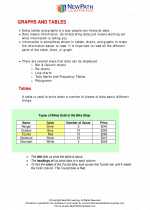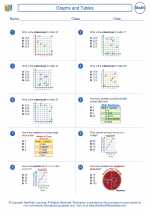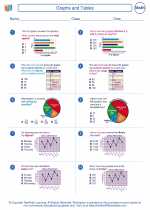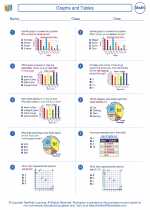Polyhedra: Explained and Explored
A polyhedron is a three-dimensional solid figure with flat faces and straight edges. The word "polyhedron" comes from the Greek words "poly," meaning "many," and "hedra," meaning "faces." Polyhedra are commonly studied in geometry and can be found in various forms in everyday objects.
Types of Polyhedra
There are several types of polyhedra, including:
- Regular Polyhedra: These are polyhedra with congruent (identical in shape and size) regular polygonal faces and identical vertices. The five regular polyhedra are known as the Platonic solids and include the tetrahedron, cube, octahedron, dodecahedron, and icosahedron.
- Irregular Polyhedra: These polyhedra have faces that are not all regular polygons. They can have a combination of different types of faces.
- Convex Polyhedra: A polyhedron is convex if, for every pair of points within the polyhedron, the line segment connecting them is also contained within the polyhedron.
- Concave Polyhedra: A polyhedron is concave if it is not convex.
Key Concepts and Formulas
In studying polyhedra, it's important to understand some key concepts and formulas, including:
- Vertices: These are the points where the edges of a polyhedron meet. The plural form of vertex is "vertices."
- Edges: The line segments where the faces of a polyhedron meet.
- Faces: The flat surfaces of a polyhedron.
- Euler's Formula: For any polyhedron, the number of vertices (V), edges (E), and faces (F) are related by the formula: V - E + F = 2.
- Surface Area: The total area of all the faces of a polyhedron.
- Volume: The amount of space enclosed by a polyhedron.
Study Guide
When studying polyhedra, here are some key points to focus on:
- Identify and understand the characteristics of regular and irregular polyhedra.
- Practice counting the number of vertices, edges, and faces of different polyhedra.
- Work with Euler's formula and understand its application to different polyhedra.
- Calculate the surface area and volume of various polyhedra using appropriate formulas.
- Explore real-life examples of polyhedra in architecture, design, and everyday objects.
By mastering these concepts and practicing related problems, you can develop a strong understanding of polyhedra and their properties.
Good luck with your study of polyhedra!
.◂Math Worksheets and Study Guides Fifth Grade. Graphs and Tables
Study Guide Graphs and Tables
Graphs and Tables  Worksheet/Answer key
Worksheet/Answer key Graphs and Tables
Graphs and Tables  Worksheet/Answer key
Worksheet/Answer key Graphs and Tables
Graphs and Tables  Worksheet/Answer key
Worksheet/Answer key Graphs and Tables
Graphs and Tables 

 Worksheet/Answer key
Worksheet/Answer key
 Worksheet/Answer key
Worksheet/Answer key
 Worksheet/Answer key
Worksheet/Answer key

The resources above cover the following skills:
Geometry (NCTM)
Specify locations and describe spatial relationships using coordinate geometry and other representational systems.
Make and use coordinate systems to specify locations and to describe paths.
Connections to the Grade 5 Focal Points (NCTM)
Data Analysis: Students apply their understanding of whole numbers, fractions, and decimals as they construct and analyze double-bar and line graphs and use ordered pairs on coordinate grids.